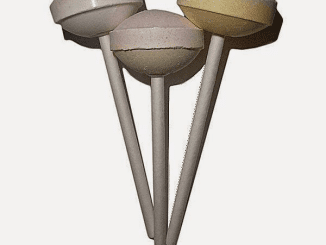Antique trivets, once essential kitchen tools, have become prized collectibles for enthusiasts of vintage household items. These metal stands, used to hold hot pans or kettles away from table surfaces, were not only functional but also reflected the craftsmanship and artistry of their time. If you’re new to collecting or curious about the history behind antique trivets, this guide will walk you through their origins, materials, and unique characteristics. Let’s explore the fascinating world of antique trivets.

What Qualifies as an Antique Trivet?
Before diving into the specifics, it’s essential to understand what makes a trivet truly antique. According to US Customs Laws, an antique is defined as an item that is 100 years old or older. This means that a trivet created before the 1920s would qualify as antique today. These early American trivets possess distinctive features in their design, casting, and craftsmanship that set them apart from modern-day reproductions.
Materials Used in Antique Trivets
Antique trivets were made using different metals, each offering unique characteristics in terms of durability, appearance, and collectability. Here’s a closer look at the most common materials:
1. Brass: Elegant and Soft
Brass was a popular material for early trivets due to its malleability and decorative appeal. However, because brass is a softer metal, antique brass trivets often show signs of wear, such as surface design loss, bowing, or bent legs. Additionally, cast marks are not always visible on brass trivets since they could be easily polished away during manufacturing. This makes identifying authentic brass trivets a bit trickier for collectors.
2. Bronze: A Rich Patina with History
Bronze trivets are made from a blend of 90% copper, 6% tin, and 4% zinc. This composition allows the metal to develop a rich patina over time, which can increase its value among collectors. Bronze trivets should never be polished, as the patina adds to their character and desirability. Instead, wash them gently with water, dry thoroughly, and keep them free from dust. Over-polishing bronze can strip away the surface, diminishing both the trivet’s charm and value.
3. Cast Iron: Durable and Detailed
Many American trivets from the 19th century were made of cast iron. Antique cast iron trivets are often larger and more finely detailed than their modern counterparts. They were typically unsigned, but almost all will have one or more cast marks, often found on the reverse or along the edges. Cast iron is durable but can also be brittle, so it’s crucial to handle and store these pieces carefully to prevent damage.
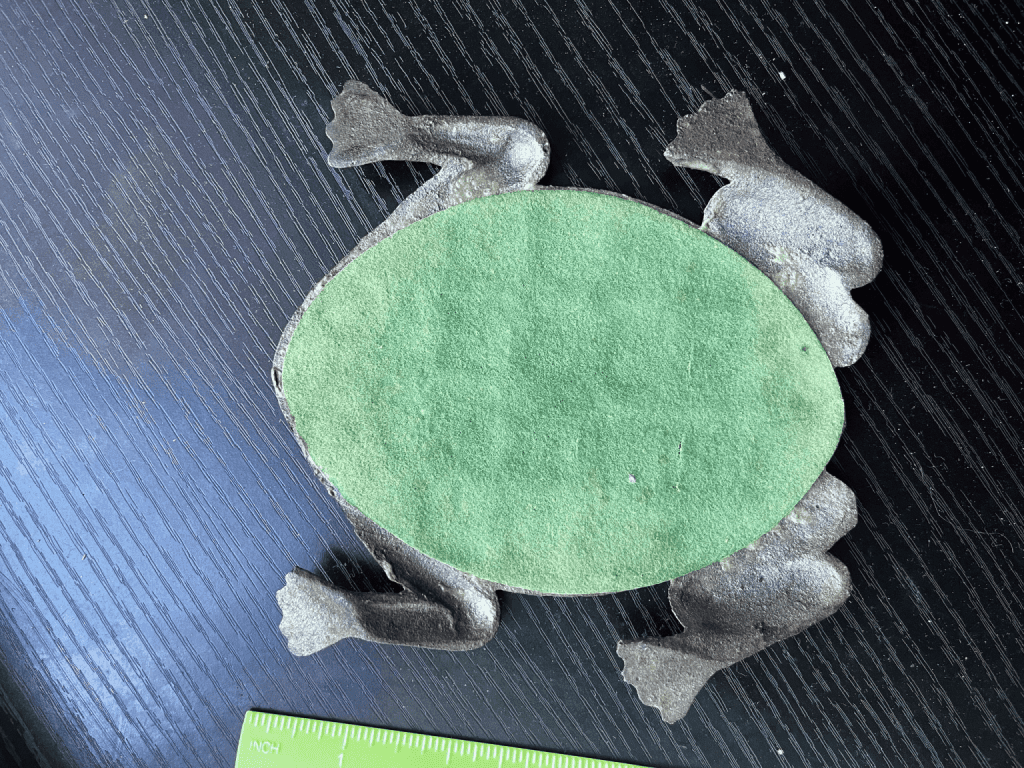
Key Characteristics of Antique Trivets
When assessing antique trivets, several design elements and features help distinguish authentic pieces from modern reproductions. Let’s break down some of the most notable characteristics.
Leg Design: Form Meets Function
One of the most defining features of an antique trivet is its legs. Early trivets were designed with longer legs, usually measuring between 1.25 to 1.5 inches or more. The longer legs were essential for raising the surface enough to dissipate heat and protect tabletops from burns. These legs came in various shapes, such as square, triangular, or round in cross-section. With age and use, many trivets may show legs that are no longer perfectly straight, which adds to their vintage appeal.
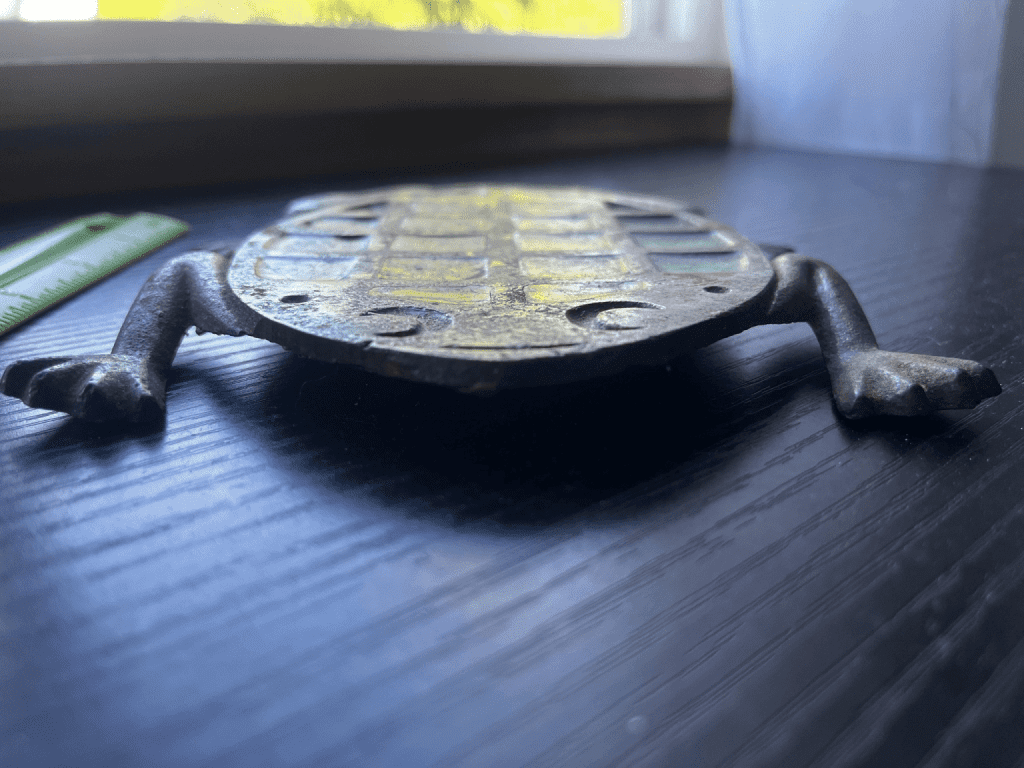
Signature Marks: Rare but Valuable
While most antique trivets were not signed, there are a few notable exceptions. Trivets produced by William B. Rimby of Baltimore, MD, often bear his signature on the reverse. Finding a signed trivet can significantly increase its value and provide collectors with a sense of authenticity and historical context.
Understanding Cast Marks on Antique Trivets
The casting process for trivets left behind distinctive marks that can help collectors determine the age and authenticity of a piece. These marks include sprue marks, wedge marks, and gate marks—each offering clues about the trivet’s origins and the techniques used to create it.
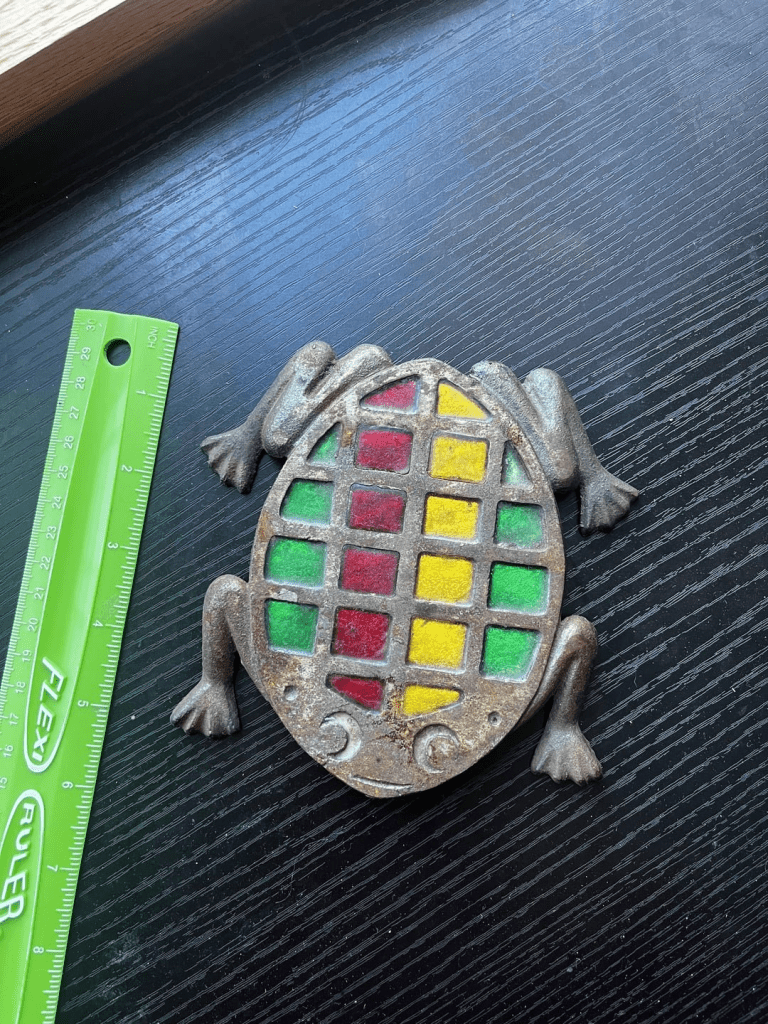
1. Sprue Marks: Pre-1865 Clue
A sprue mark appears as a circular scar, typically found on the center reverse of the trivet. This mark, which measures about 5/16″ to 1/2″ in diameter, indicates the point where the metal was poured into the mold. Trivets with sprue marks often predate 1865, making them highly sought after by collectors. These marks may feel smooth to the touch or slightly elevated, depending on the casting process.
2. Wedge Marks: Early Casting Technique
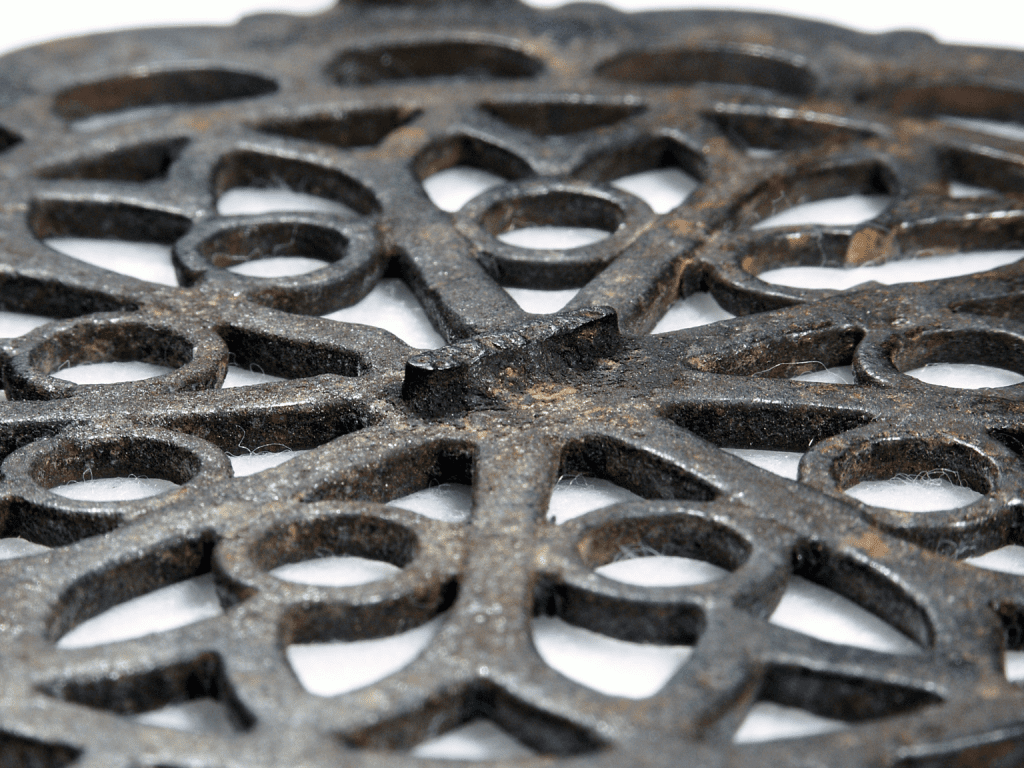
Another early casting indicator is the wedge mark, which appears as a raised, rectangular scar near the center of the trivet’s reverse. Measuring about 1/8″ in width and 3/4″ or longer, wedge marks are typical of trivets made before 1865. These marks offer collectors a tangible connection to the casting techniques used during the 19th century.
3. Gate Marks: Post-1865 Evidence
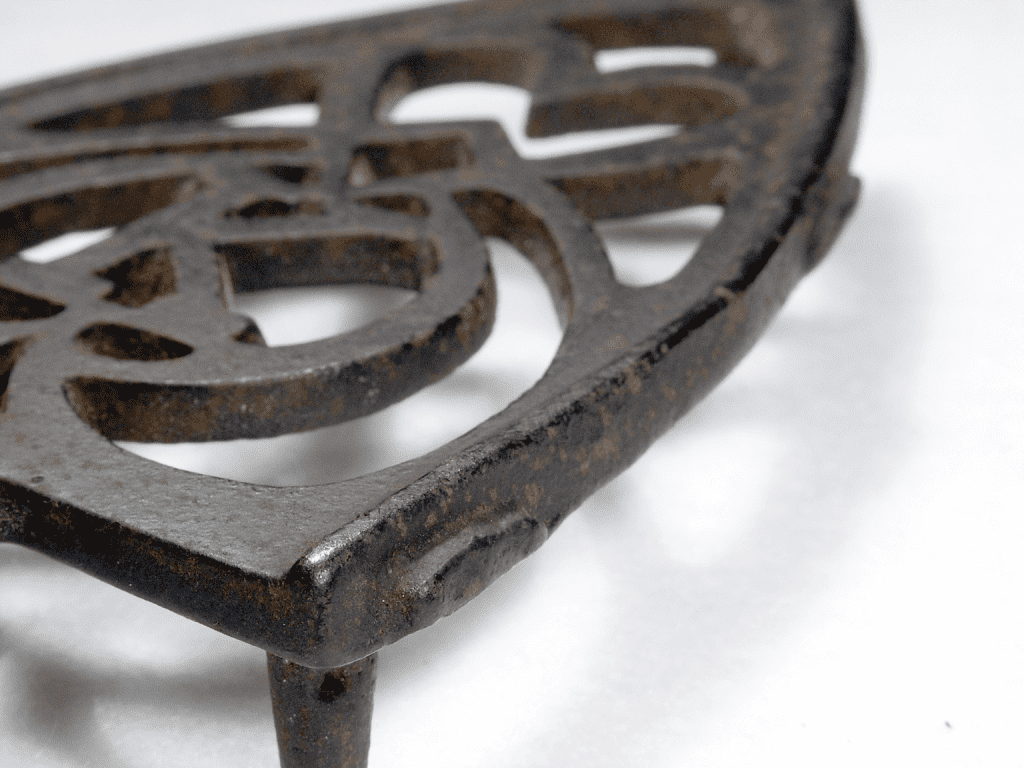
A gate mark is found along the edge of a trivet and signifies that the piece was likely cast between 1865 and 1900. During this period, castings were typically finished by hand filing. If you find a trivet with prominent gate marks that haven’t been smoothed out, it likely dates to the latter half of the 19th century. After 1900, casting processes became more automated, and uniform grinding marks replaced the irregular hand-filed ones seen on earlier pieces.
Caring for Antique Trivets
Preserving the condition of antique trivets ensures that they maintain both their aesthetic appeal and their value. Here are a few tips for caring for your collection:
- Avoid Over-Polishing: Whether it’s brass, bronze, or cast iron, resist the urge to polish antique trivets frequently. Over time, polishing can strip away surface details and patina, reducing their historical value.
- Store with Care: Because cast iron trivets can be brittle, it’s important to store them in a safe location where they won’t be bumped or dropped. Consider wrapping them in protective padding when not on display.
- Clean Gently: Use a soft cloth to dust trivets regularly. For deeper cleaning, a mild soap and water solution is sufficient, followed by thorough drying.
Conclusion: The Art of Collecting Antique Trivets
Antique trivets offer a glimpse into the artistry and functionality of past eras. Whether made from brass, bronze, or cast iron, these pieces reflect a time when even the most practical household items were crafted with care and attention to detail. By understanding the unique characteristics of these vintage pieces—such as leg design, cast marks, and material composition—you can begin to build a collection that is both historically significant and aesthetically pleasing. With proper care, these antique trivets will continue to stand the test of time, offering a piece of history for future generations to admire.

